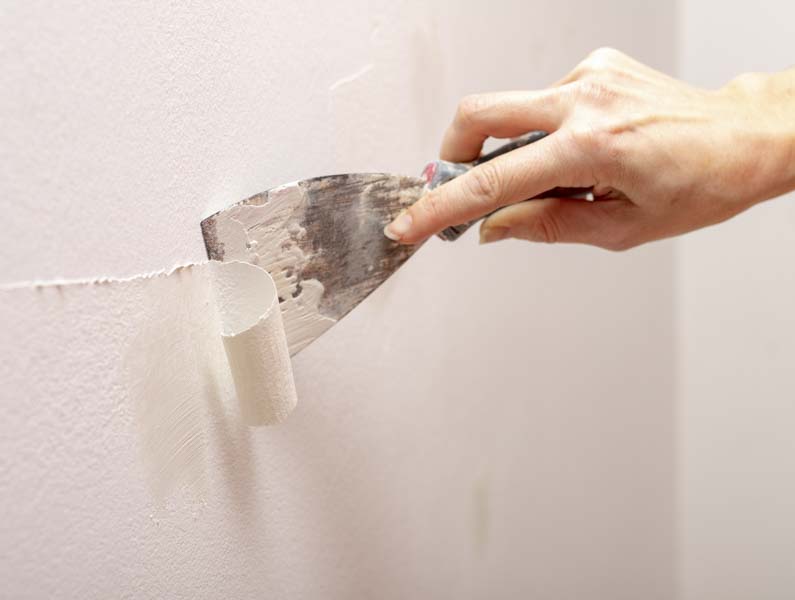Paint stripping is a lot of work, but sometimes it’s the only way to achieve a beautiful lasting finish on your wood projects. Discover various paint stripping methods and learn how to strip paint from wood the right way.
Why Stripping Paint is Important
Discover the important benefits of stripping paint off of wood.
Surface Preparation
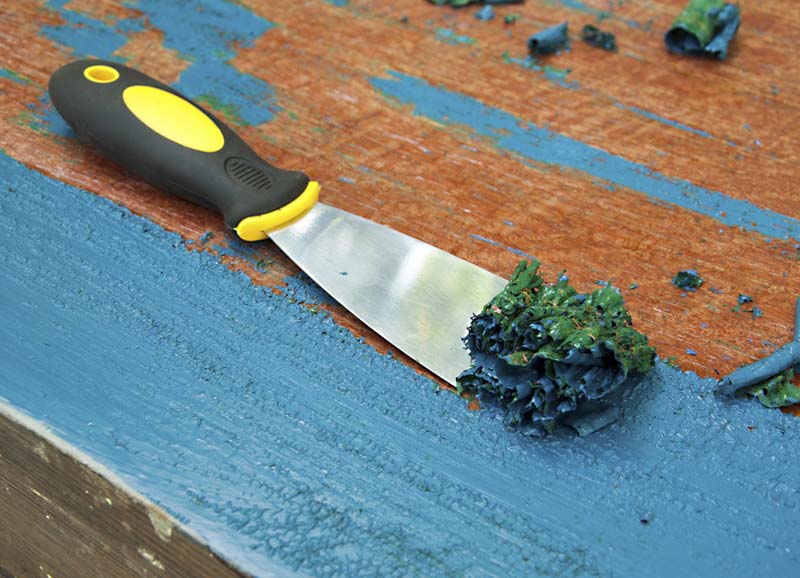
Most paint jobs last about 5 to 7 years. Once the paint starts to peel, chip, crack, and fade, it’s time to put on a fresh coat.
However, you need a clean, smooth surface without irregularities before you can repaint wood. Bumps can compromise the overall quality of the new paint job, and stripping paint ensures a clean, even application.
Health and Safety
You can remove old paint using various methods, but chemical paint stripping is one of the safest techniques. While old paint strippers were toxic and carcinogenic, new paint stripper products are safer, with fewer volatile organic compounds (VOCs) and less odor.
Other methods present significant health risks and may not be suitable for the average DIYer. For example, consider these safety concerns:
- Sanding paint off of wood presents the risk of dust inhalation.
- If you’re working on a project with old paint layers, lead or other hazardous material exposure is possible.
- Using heat to remove paint creates toxic fumes and presents a fire hazard.
Enhanced Durability
There are a few reasons why stripping paint ensures your project’s durability. A clean surface provides optimal adhesion and ensures your new paint job lasts longer. Scraping paint off wood allows you to assess its condition and determine if it’s compromised before refinishing it.
Cost Savings
Compared to the cost of replacement, paint stripping is a much more cost-effective solution for many home improvement projects. Furniture paint stripping allows you to rehabilitate old pieces and save money by upcycling outdated furniture. Many pieces of old furniture have plenty of life left in them and just need a little TLC to restore them to their former glory.
When to Strip Old Paint: Signs of Deterioration
When it comes to stripping paint, one of the toughest decisions you’ll have to make is knowing when to remove it. Here are the signs of deterioration to look for when determining if stripping paint is worth it.
1. Flaking and Peeling Paint
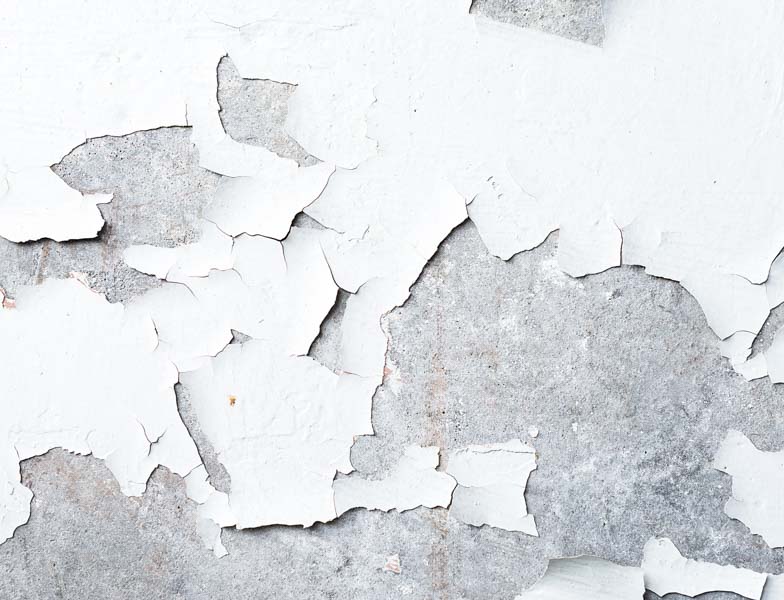
Paint that’s peeling and flaking indicates poor adhesion. Even though there are multiple causes of this common issue, removal is the only solution for flaking and peeling paint.
2. Cracks and Blisters
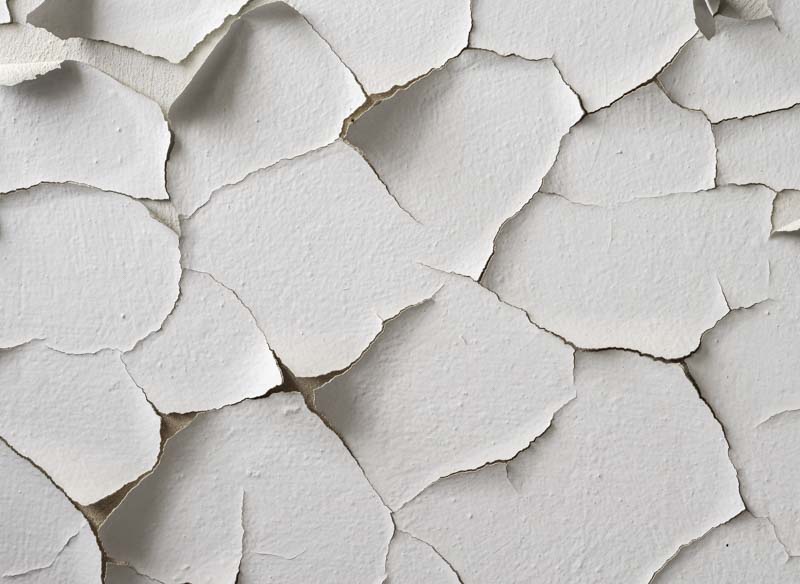
Cracked and blistered paint indicates a problem under the surface, such as trapped moisture, heat, or a combination. To avoid cracks and blisters, avoid painting wood that’s not completely dry, and don’t paint in temperatures above 90°F (32°C).
3. Fading or Discoloration
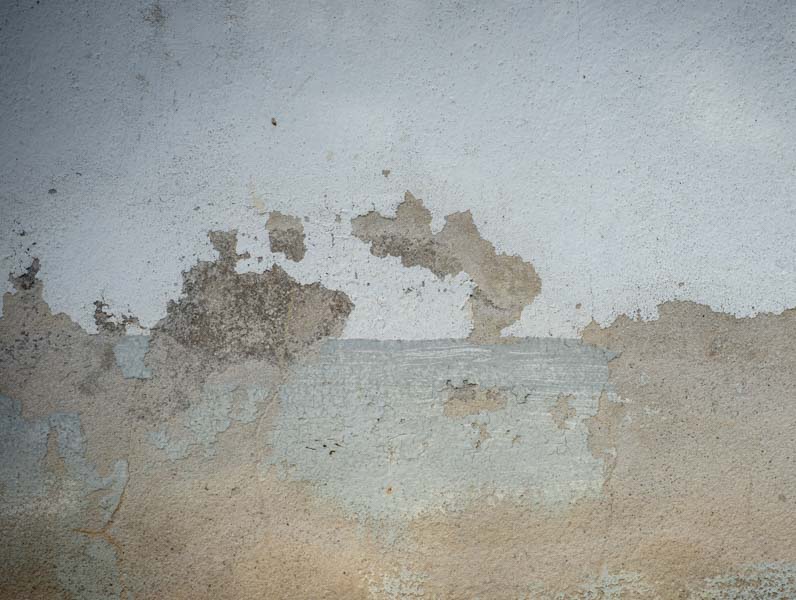
Oxidation is the primary cause of discoloration and fading in paint. It’s caused by the ultraviolet rays from the sun, and the damage is irreversible.
To restore painted wood to its original luster, it has to be repainted. However, since the molecular structure of paint breaks down under UV rays, you must remove the original paint first.
4. Visible Rust or Corrosion (Metal Surfaces)
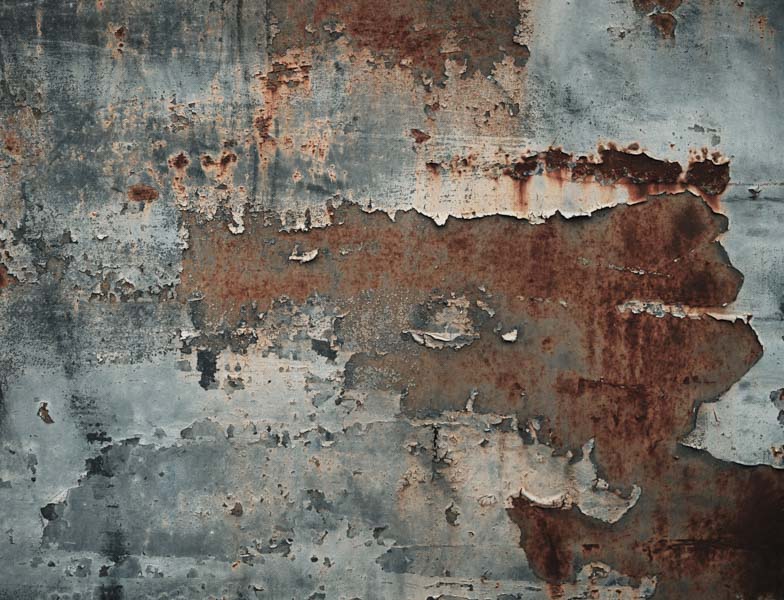
On metal surfaces, paint removal is indicated whenever you have signs of visible rust or corrosion. Painted metal rusts when water penetrates the paint, usually in places where the surface has been scratched or marred.
Many of the same methods used to remove paint from wood can be used on metal surfaces, including chemical paint strippers, heat, and abrasive blasting techniques.
5. Inconsistent Texture or Finish
There are several potential causes of inconsistent, uneven finishes. Here are a few reasons you could have a bumpy finish:
- Poorly shaken paint
- Painting on surfaces that aren’t smooth
- Temperature fluctuations during drying
- Changing tools midway through the paint job
Once a paint job is botched, it’s almost impossible to fix without stripping it and starting over.
6. Chalking or Powdery Residue
Another problem caused by UV rays is chalking and powdery residues forming on the surface of the paint. Once the UV rays break down the binders in the paint, the pigments are distributed loosely on the surface. To ensure proper adhesion, you’ll need to remove the paint before repainting.
7. Visible Water Damage
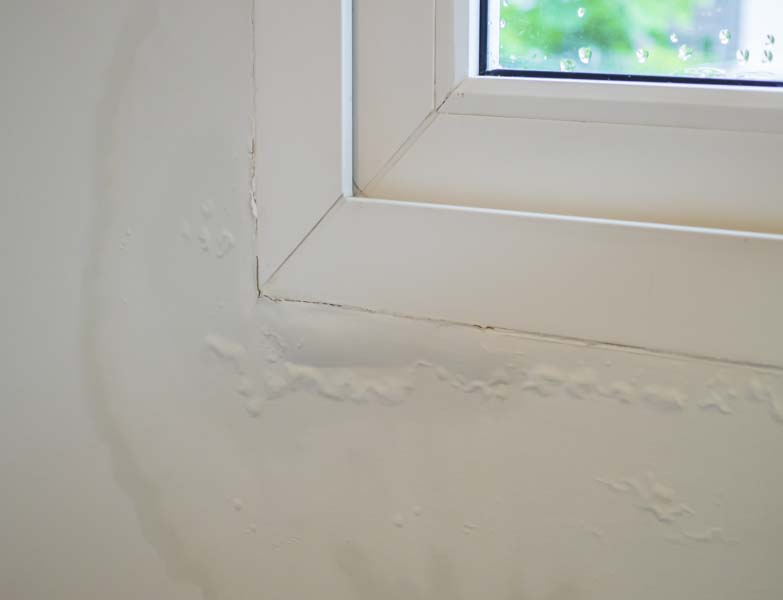
Visible water damage can occur on painted wood surfaces due to several factors. Usually, it’s caused by a water leak or moisture absorption. The paint eventually bubbles and cracks and then peels away. Once you fix the water leak and the wood dries out, you’ll need to remove the old paint before refinishing.
8. Lead-Based Paint
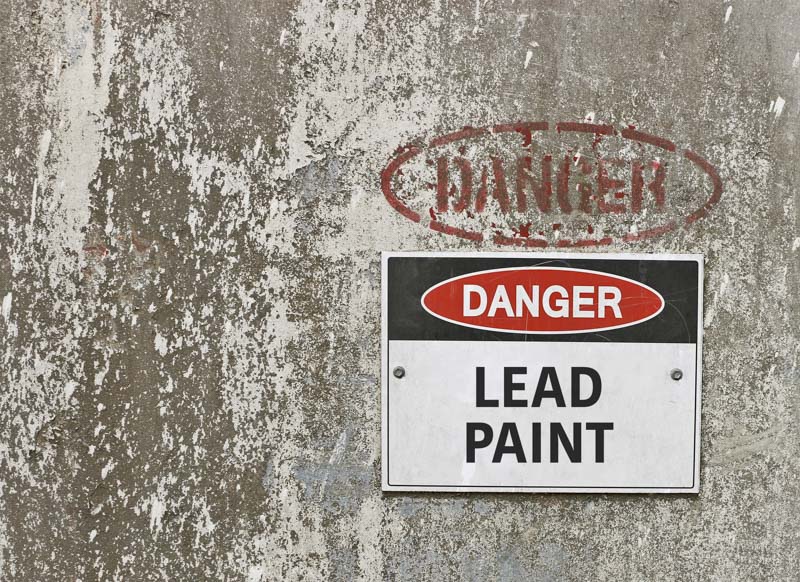
In 1978, lead was banned from use in the United States because of safety concerns related to children. Until then, it was added to paint products to make them more durable and accelerate the drying process.
Lead in paint still presents significant safety concerns, and exposure can cause numerous symptoms, such as headaches, dizziness, and memory loss. If you have any projects with old paint, ensure that they’re handled appropriately.
We’ve got even more paint removal tips. Learn how to remove paint from brick without ruining it.
Popular Paint Stripping Methods
No matter what paint stripping method you choose, it’s a lot of work. Each method takes a fair amount of elbow grease, and while the results are worth it, most people look for the easiest way to remove paint from wood.
Chemical Paint Strippers
Solvents are used to soften paint and make it easier to remove. Commercial paint strippers are smelly, so use them outdoors in a well-ventilated area.
Heat Guns
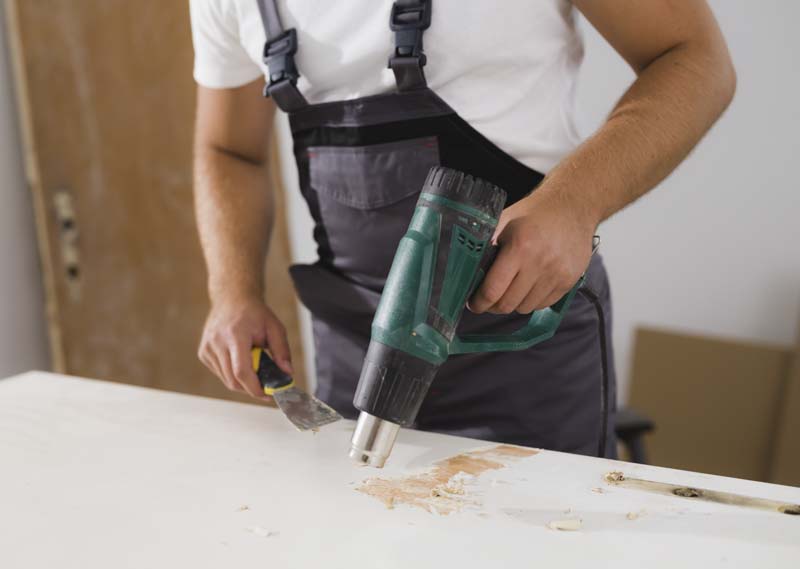
Using a heat gun is an easy way to strip paint from wood. The heat softens the paint and makes it easier to scrape off.
Take safety precautions when using heat guns because they get extremely hot. Keep a fire extinguisher on hand, and never leave a heat gun running unattended.
Sanding
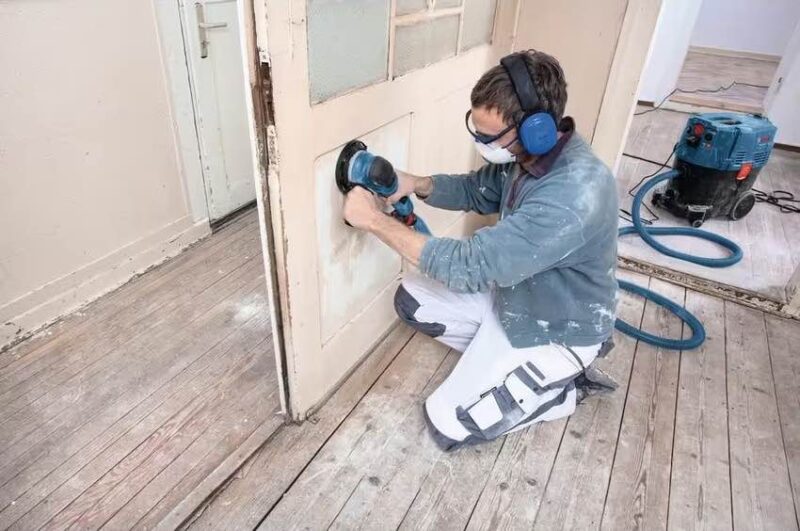
Using sandpaper to remove paint is one of the most common paint removal methods. Whether you use a hand sander, orbital sander, or belt sander usually depends on the size of the job, but always be sure to protect your lungs from dust inhalation.
Abrasive Blasting
Professionals and experienced DIYers often use abrasive blasting to remove paint. Consider abrasive blasting if you’re wondering how to remove paint from wood without sanding.
There are several abrasive blasting methods used to remove old paint, including sandblasting, soda blasting, vacuum blasting, and dry ice blasting. Vapor blasting produces less dust and is one of the safest ways to remove lead paint.
Stripping old paint from your home’s exterior for a repaint? If so, here’s how much it costs to paint a house.
Benefits of Stripping Old Paint
Learn more about the benefits of stripping old paint.
Improved Aesthetics
Some wood surfaces have several layers of paint. Dearly loved pieces of furniture and wood siding on old buildings are two common examples. Eventually, there comes a time when the paint needs to be stripped before refinishing.
Enhanced Durability
Stripping paint allows you to achieve better adhesion and ensures a smoother application. A smooth coat of paint prevents other problems, such as moisture absorption, from developing over time.
Cost Savings
Refinishing wood is much cheaper than replacing it. Of all the methods, using paint thinner on wood as a chemical solvent is one of the cheapest ways to remove paint.
Before you repaint, make sure you get the right paintbrush for the job.
Tips for Stripping Paint from Wood
Paint stripping with solvents fails if you don’t use the right techniques. Follow these tips and tricks for stripping paint from wood.
Safety First
Wear protective gear to guard against the chemicals and fumes in paint strippers. Gloves, goggles, and a mask or respirator are essential safety items. Work in a well-ventilated area, preferably outdoors.
Surface Preparation
Start with a clean, dry surface. Mask off all parts of the project that won’t be stripped. Deal with loose, chipping, or peeling paint by brushing it off with a stiff brush.
Choosing the Right Stripper
To choose the right paint stripper, consider the type of paint, surface area, and project size. Consider eco-friendly products when possible, as they are safer for you and the environment.
Test Stripping
Advances in paint technology have created some tough paints, and some strippers won’t touch them. Always follow the paint stripper manufacturer’s recommendations and test a small area before applying it to your project.
4. Visible Rust or Corrosion (Metal Surfaces)
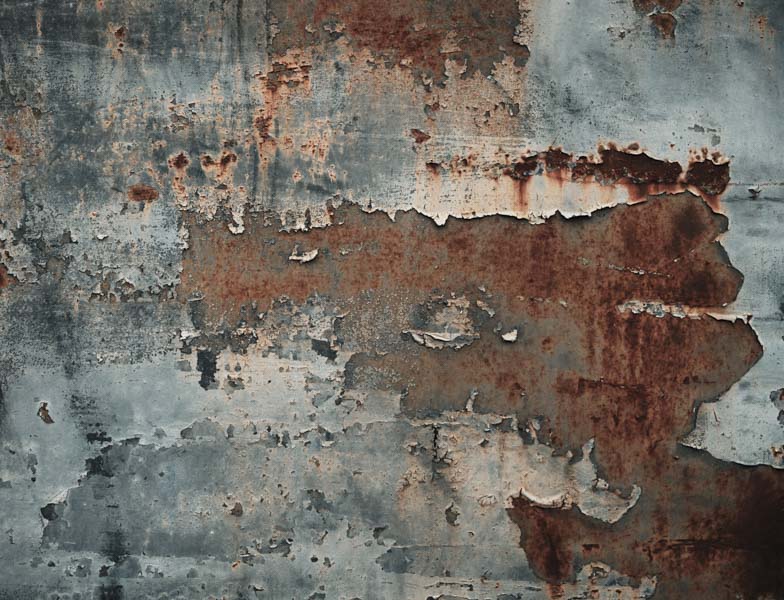
Apply the paint stripper generously and wait for the recommended amount of time. Then, use the right tools to remove the softened paint.
Coarse steel wool, small wire brushes, and paint scrapers are the best tools. You may need to apply the paint stripper multiple times to remove all the layers of paint.
Wood Preservation
After you’ve removed the paint, wipe the wood with a rag soaked in a mixture of vinegar and water. Water opens the grain, so use it sparingly while still working to remove all traces of paint stripper.
After-Stripping Care
After paint stripping, treat the wood with mineral spirits using a lint-free cloth. Allow it to dry completely, then sand it lightly before refinishing.
Removing Paint from Wooden Furniture
Here are some tips for paint removal from furniture. Remember to always remove hardware before stripping paint.
| Furniture type | Best paint stripping methods | Tips and tricks |
| Cabinets | Chemical stripping, heat guns, abrasive blasting | Test the stripper in an inconspicuous area. |
| Doors | Chemical stripping, sanding, abrasive blasting | Work in small sections to remove the paint. |
| Tables | Chemical stripping, sanding, abrasive blasting | Be careful not to damage edges. |
| Trim | Chemical stripping, and heat guns | For intricate trim, use a paint stripper and a wire brush. |
| Dresser | Chemical stripping and sanding | Use abrasive blasting for large pieces. |
If you’re wondering what’s the best wood for painting cabinets, we have the answers!
Additional Considerations When Stripping Paint
Here are more factors to consider when removing paint from wood.
Safety Precautions
Stripping paint presents several safety risks, so it’s important to take safety precautions before you start your project. Use a respirator, goggles, and other appropriate safety gear, and work outside in a well-ventilated area. Always wash paint residue off your skin as soon as possible.
Environmental Responsibility
The Environmental Protection Agency has identified health risks associated with several chemicals found in paint strippers. These chemicals pose a threat to humans, animals, and the environment. Consider using less toxic, citrus-based products.
Professional vs. DIY
Paint stripping is a handy skill, and for most projects around the home, DIYers can get the job done without a lot of expertise and special tools.
If you don’t know how to use paint stripper, it helps to practice on less expensive pieces of furniture until you know what you’re doing. Consider hiring a professional for large projects or when finishing expensive antique furniture.
FAQs about How to Strip Paint
Can I paint over old paint without stripping it?
As evidenced by the fact that some wood projects have several layers of paint, it is possible to paint a new coat on top of an old one without stripping it. Often, you’ll get a much better result if you get the old paint off the wood.
What is the best way to strip paint without using sandpaper?
There are multiple ways to strip paint without using sandpaper. The best way to remove old paint from wood is with a chemical paint stripper. It’s one of the safest and most cost-effective ways to remove paint from wood.
What is the fastest way to strip paint?
Often, a heat gun is the fastest way to strip paint from wood. It’s important to understand that heating paint causes it to aerosolize, leading to toxic fumes that are dangerous if inhaled. If you use a heat gun, work in a well-ventilated area and wear protective gear.
Can I strip paint from exterior surfaces?
Taking paint off wood surfaces like decks, fences, and exterior siding is common when you’re upgrading these features. If you have flaking or peeling paint on any of these wood surfaces, choose an appropriate paint stripping method, such as sanding, scraping, or chemicals.
What should I do if I encounter lead-based paint?
If you find lead paint, avoid disturbing it and keep children away. If you’ve already sanded it, wipe up as much of the dust as possible, and then use a HEPA (High-efficiency Particulate Air) filter vacuum to clean up the rest. When refinishing, use a special primer to encapsulate the lead paint.

